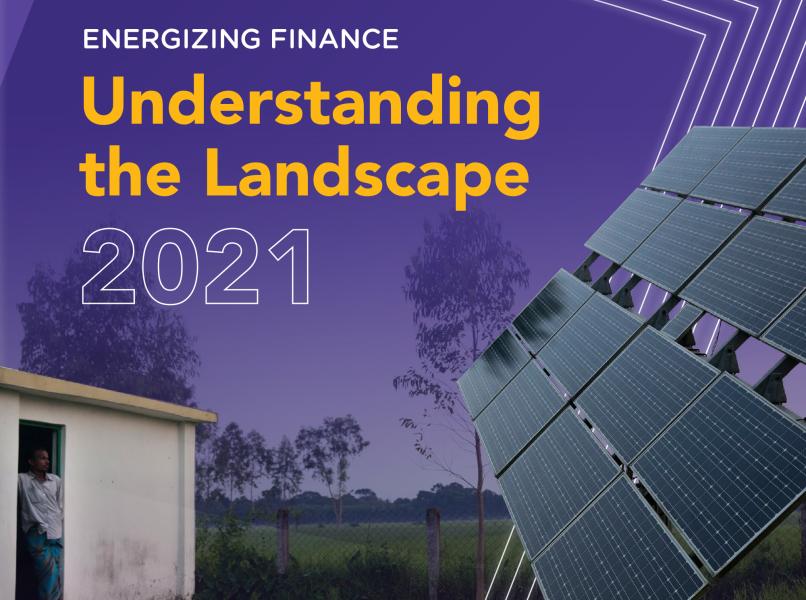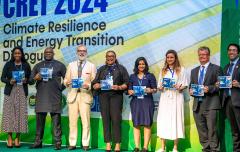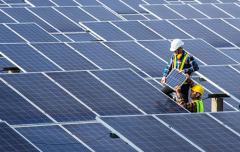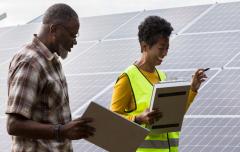Energizing Finance: Understanding the Landscape 2021
- For the seventh consecutive year, the world is falling far short of the level of investment required to achieve energy access for all.
- SDG7 is inextricably linked to the clean energy transition and must be achieved for a just transition and to deliver other SDG targets.
- The Covid-19 pandemic puts efforts to achieve SDG7 — already at risk — further behind.
About the report
Sustainable Development Goal 7 (SDG7) sets out a global aim to ensure access to affordable, reliable, sustainable and modern energy for all. The Energizing Finance: Understanding the Landscape report, developed by Sustainable Energy for All in partnership with Climate Policy Initiative and produced annually since 2017, provides a comprehensive analysis of tracked finance commitments flowing to the two key areas of energy access: electrification and clean cooking. This fifth edition of the report tracks finance for electricity and clean cooking committed in 2019 to 20 Sub-Saharan African and Asian countries — known as the high-impact countries (HICs) [1] — which together are home to more than 80 percent of people globally without energy access.
Key findings
For the seventh consecutive year, the world is falling far short of the level of investment required to achieve energy access for all. Finance for electricity in the HICs declined substantially in 2019 to USD 32 billion from USD 43.6 billion in 2018 and finance committed to residential electricity access fell to USD 12.9 billion, less than one-third of the USD 41 billion estimated annual investment needed to attain universal electricity access by 2030. Clean cooking investment has also stagnated, falling critically short of the USD 4.5 billion in annual investment required for universal access. Annual tracked commitments to clean cooking in HICs have languished around USD 130 million between 2015 and 2019 (except in 2017 when commitments dropped precipitously to less than USD 50 million), and the overall clean cooking investment portfolio continues to be dominated by a few large projects in a small number of countries, funded by a handful of capital providers.
SDG7 is inextricably linked to the clean energy transition and must be achieved for a just transition and to deliver other SDG targets. No major country or region is decarbonizing its power sector at the pace required to meet the goals of the Paris Agreement, with continued financing of fossil fuel projects driving misalignment across a wide range of markets (CPI 2021). A failure to make substantial progress towards SDG7 and to transition to clean energy also affects attainment of other SDGs, including good health and well-being (SDG3), gender equality (SDG5), reduced inequalities (SDG10), and climate action (SDG13), as the social and economic impacts of poor energy access compromise progress on intersecting SDGs.
The Covid-19 pandemic puts efforts to achieve SDG7 — already at risk — further behind. After six years of decline in the number of people without electricity access in Africa, that figure most likely increased in 2020 due to the Covid-19 health crisis and its associated economic downturn. Those impacts have shifted government priorities, caused supply chain disruptions, and limited activities associated with enhancing energy access to underserved populations (IEA et al. 2021). The pandemic has also threatened progress in clean cooking access; under today’s current and announced policies, 2020 and 2021 will see a reversal in hard-won, incremental progress and by 2030, 2.4 billion people will remain without access to clean cooking. Despite the ambition of domestic pandemic stimulus packages to date, only a fraction of pledges contain energy access components, risking further sidelining finance for sustainable energy access.





